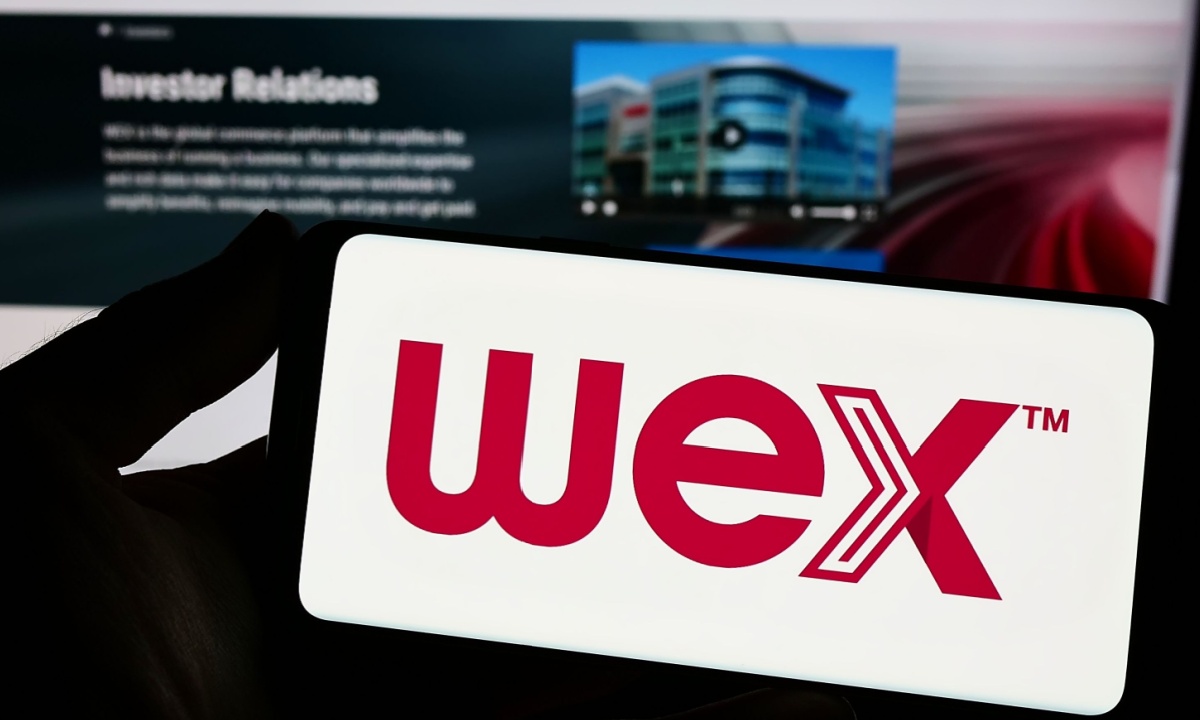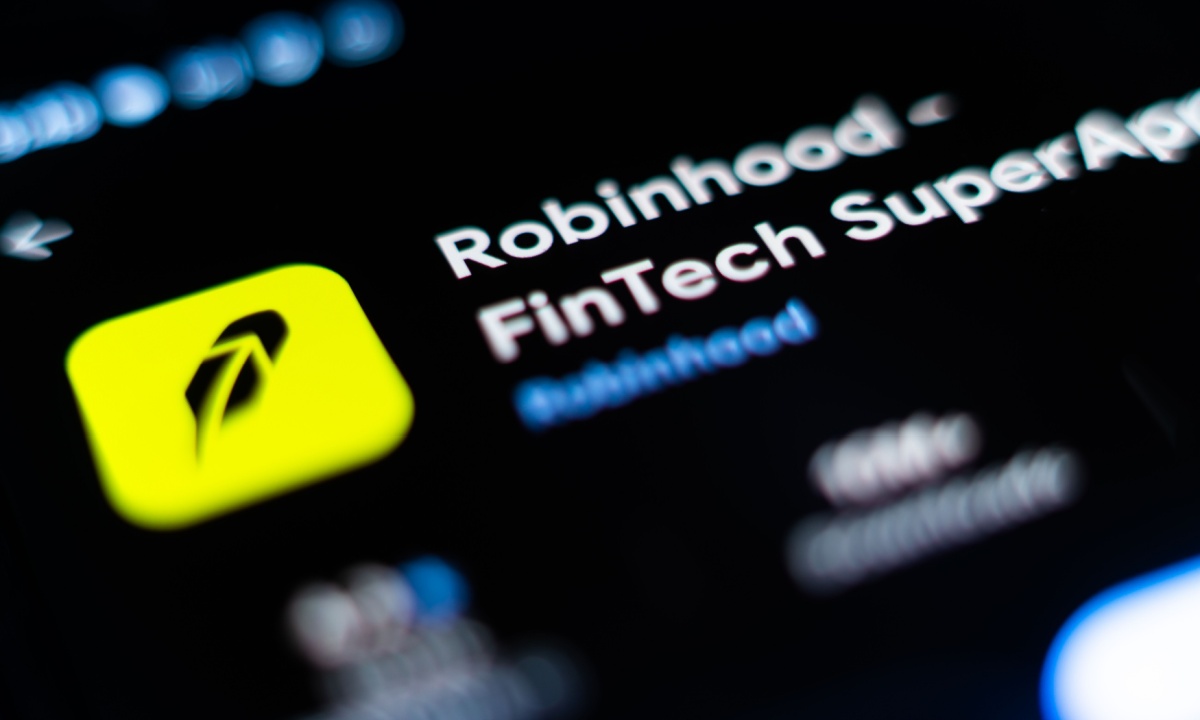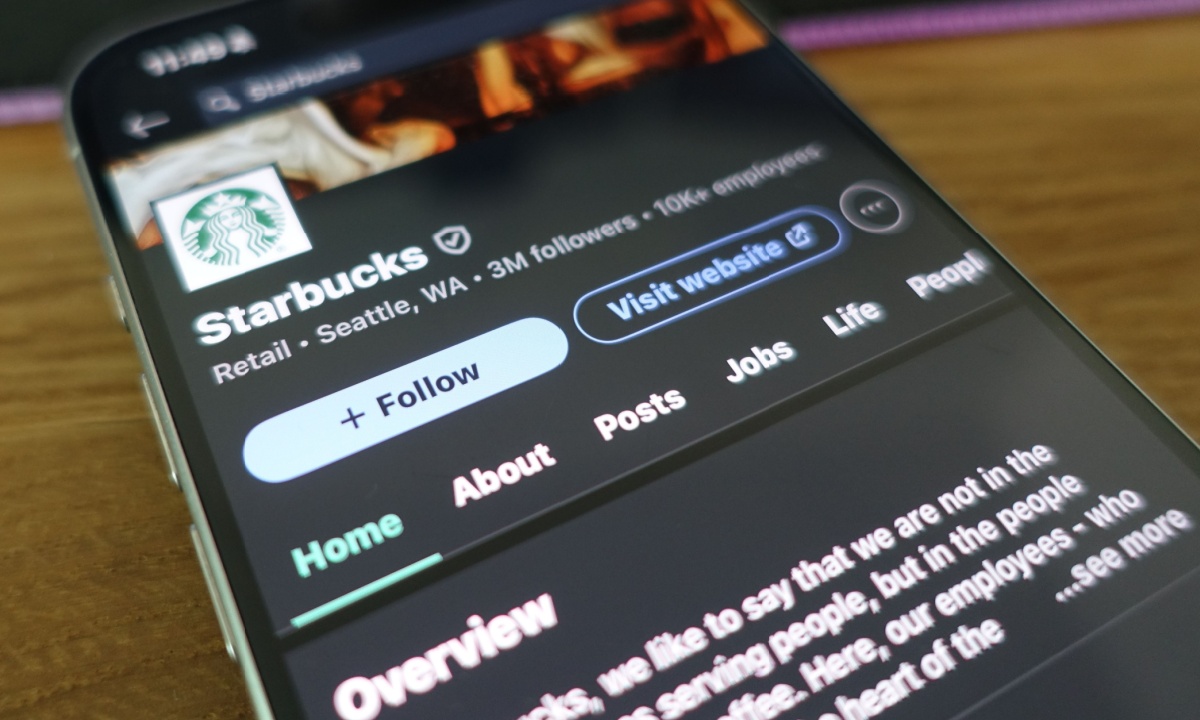Fintech
WEX Sees 25% Year-Over-Year Growth in Accounts Payable Automation | PYMNTS.com
Published
6 days agoon
By
Hrishi
When economic uncertainty reigns, handling surprises takes an agile business strategy.
That was the case with the B2B payments player WEX, which on Thursday (July 24) delivered a second quarter 2025 earnings that revealed a deliberate and disciplined plan to reinvent its growth model one segment at a time.
Most casual observers know WEX as a legacy fuel card provider. That’s not wrong — but it’s no longer the full story.
The company now operates across three distinct segments: Mobility (fleet and fuel payments), Benefits (health-related accounts like HSAs and FSAs), and Corporate Payments (virtual cards, embedded finance, and AP automation).
Each of these business lines represents a different thread in WEX’s transformation from a payments utility into a multiplatform financial infrastructure company.
“Our industry-leading products, service and reliability drive our ability to win customers of all sizes across each of our segments,” WEX’s CEO Melissa Smith told investors on the earnings call. “We’re in a great position to continue to win in the market.”
Across all three segments, the company has been plowing resources into product development, customer experience, and go-to-market capabilities. While some of those bets are still ramping, others are already bearing fruit, as WEX continues building a defensible, multisided platform for B2B financial infrastructure.
Read more: Why Software Platforms Still Struggle to Turn Payments Into Profits
Fuel Cards to Fintech Infrastructure
The mobility segment, which still accounts for about 50% of WEX’s total revenue, is navigating pressures. Same-store sales across local and over-the-road (OTR) fleets are down, reflecting both efficiency gains (i.e., fewer gallons per mile) and cautious spending by mid-market fleet operators.
Yet the story here isn’t decline — it’s reinvention. WEX recently inked a major new contract with BP, one of the last holdouts among top U.S. fuel retailers. The deal not only brings BP into the WEX network but also allows WEX to issue BP-branded fleet cards linked to its loyalty program.
“This exemplifies WEX’s purpose of simplifying the business of doing business,” Smith said, calling the BP agreement a “cementing” of WEX’s leadership in fleet payments.
While the full revenue from BP’s existing card portfolio won’t hit until after its conversion — likely sometime in 2026 — WEX expects 0.5% to 1% of additional annual revenue from the deal once fully implemented. In the meantime, the company is seeing strong traction from increased investments in digital marketing aimed at small fleet operators. Historically, each dollar spent in this channel has generated $4 in revenue over two years, and early signs suggest the return profile remains intact.
WEX’s Benefits segment may not make headlines, but it continues to be one of the company’s most stable growth engines. Revenue in Q2 rose 8.5% year over year to $195.1 million, driven by 6% growth in software-as-a-service (SaaS) accounts and 11.4% growth in custodial investment income.
This segment — built on the complex infrastructure that powers HSAs, FSAs, and COBRA accounts — has both high margins and high stickiness. Smith emphasized that switching providers in this space is “complex, time-consuming and disruptive,” which explains why WEX serves nearly 60% of the Fortune 1000 and powers more than 20% of the HSA market through its direct and channel partner offerings.
WEX also launched a new AI-driven claims processing tool that slashes reimbursement processing from days to minutes — a rare moment where FinTech buzzwords meet real impact. The automation reduces costs while improving the user experience — an important differentiator as benefits become a battleground for attracting talent.
Read more: WEX Corporate Payments Chief Says Virtual Cards Adoption Needs a Strategy Refresh
Gunning for Growth
If there’s a wildcard in WEX’s portfolio, it’s corporate payments. The segment, which includes both embedded payments (mainly virtual cards used in travel and other verticals) and accounts payable (AP) automation, saw revenue decline 11.8% to $118.3 million.
The culprit: a major online travel agency customer restructuring its spend model — a drag that is now mostly behind the company.
But the company’s AP automation story is particularly compelling. WEX has increased its dedicated AP sales force by over 50% and is riding a wave of demand from mid-size and enterprise companies looking to digitize legacy payment workflows. With more than 140 new customers signed year-to-date and a record pipeline, this unit could quietly become a growth engine in its own right.
Meanwhile, the company is expanding its embedded payments offering into new verticals such as media, eCommerce and expense management. Owning a bank (WEX Bank) gives it an edge in these scenarios, allowing end-to-end integration that many FinTech challengers struggle to offer at scale.
You may like
Fintech
Robinhood Rides Crypto Surge, Bitstamp Deal to Nearly $1B Revenue | PYMNTS.com
Published
8 hours agoon
July 31, 2025By
Hrishi
Robinhood Markets on Wednesday (July 30) delivered second-quarter 2025 results that reveal a company pivoting sharply from its roots in commission-free retail trading toward a diversified, multilane financial platform.
The company’s Q2 2025 earnings showed a 45% year-over-year revenue surge to $989 million and a doubling of diluted earnings per share to $0.42.
“We delivered strong business results in Q2 driven by relentless product velocity, and we launched tokenization — which I believe is the biggest innovation our industry has seen in the past decade,” said Vlad Tenev, chairman and CEO of Robinhood.
“Q2 was another great quarter as we drove market share gains, closed the acquisition of Bitstamp and remained disciplined on expenses,” added Jason Warnick, CFO of Robinhood. “And Q3 is off to a great start in July, as customers accelerated their net deposits to around $6 billion and leaned in with strong trading across categories.”
The company ended the quarter with $279 billion in platform assets — up 99% year over year — and $13.8 billion in net deposits. Funded accounts reached 26.5 million, a 10% gain, and cash sweep balances rose 56% to $32.7 billion, reflecting deeper wallet share per customer.
Despite the strong earnings, Robinhood’s share price remained relatively flat in after-hours trading, as of reporting.
Read more: Wall Street Moves On-Chain as Tokenization of US Stocks Goes Global
Crypto Expansion Matures
For years, Robinhood’s crypto offering was primarily a retail gateway — an accessible on-ramp for users to dabble in bitcoin, ethereum, and other digital assets. In Q2 2025, however, the company demonstrated its ability to scale its crypto ambitions.
Revenues from crypto-related products climbed 98% year-over-year to $160 million, while total notional crypto trading volumes hit $35 billion.
Much of that surge can be attributed to the June acquisition of Bitstamp, a legacy exchange with deep roots in Europe and over 50 regulatory licenses across major jurisdictions. Notably, $7 billion in Q2 crypto volume came from Bitstamp alone, indicating rapid onboarding of its institutional client base.
With Bitstamp, Robinhood gains more than trading infrastructure — it secures compliance credibility, cross-border licensing, and a level of operational maturity essential for institutional trust. The deal allows Robinhood to fast-track services like crypto staking, which is now available to eligible U.S. users, and stock tokenization, which enables investors in Europe to trade over 200 U.S. equities in tokenized form.
Tenev stressed to investors that the Bitstamp acquisition “instantly globalizes our crypto footprint and bridges us to institutional demand in a way that’s hard to replicate organically.”
At the same time, historically dismissed by financial elites as a gamified millennial platform, Robinhood is making strides to rebrand itself as a serious contender in the institutional arena. The Bitstamp acquisition is only part of that story. The company is also in the process of acquiring WonderFi, a Canadian digital asset platform specializing in decentralized finance (DeFi) tools and tokenized asset services.
Infrastructure and Credibility
Set to close in the second half of 2025, the WonderFi deal is expected to expand Robinhood’s footprint in North America and deepen its capacity to offer programmable finance products.
Internally, Robinhood has begun to lay down institutional-grade infrastructure, including custody solutions, anti-money laundering and know-your-customer processes, and advanced trading engines. With Bitstamp’s regulatory muscle and WonderFi’s technology stack, Robinhood appears poised to rival firms like Coinbase or Galaxy in the lucrative middle ground between traditional finance and crypto-native platforms.
Beyond digital assets, Robinhood’s Q2 also demonstrated growth in core FinTech verticals — specifically those aimed at long-term customer lifetime value rather than one-off trades. Robinhood Gold, the company’s premium subscription offering, reached a record 3.5 million members, up 76% year-over-year. That growth has lifted average revenue per user to $151, a 34% annual increase.
Robinhood Banking, in internal beta, is slated for public rollout later this quarter. The product aims to bring private banking features — such as high-yield savings, estate planning, and net worth tracking — to the mass market.
Still, regulatory headwinds also loom large. Crypto staking and tokenization, two of Robinhood’s most promising innovations, face uncertain regulatory treatment in both the U.S. and Europe. SEC scrutiny of digital asset products, along with evolving interpretations of tokenized securities, could force strategic recalibrations.
“Tokenization will do for stocks what stablecoins did for fiat,” Tenev said.
Fintech
Starbucks Revitalization Initiative to Shift Focus to App and Rewards | PYMNTS.com
Published
1 day agoon
July 30, 2025By
Hrishi
Starbucks plans to enhance its mobile app, its mobile order-and-pay offering, and its rewards program in 2026 as it continues its “Back to Starbucks” plan for revitalizing the coffeehouse brand.
Company executives said this during a Tuesday (July 29) earnings call in which they reported a decline in comparable store sales but pointed to other metrics they said highlight the progress Starbucks is making with its plan.
“This quarter, we’ve made meaningful progress, and we are ahead of our expectations,” Starbucks Chairman and CEO Brian Niccol said during the call. “We’re moving quickly to transform both the business and the culture. We’re testing, learning and focusing on the work that has the biggest impact, fixing the operational foundations of the business and building a platform for innovation in 2026.”
Niccol announced the “Back to Starbucks” plan in October, saying the company aimed to revitalize its U.S. operations and elevate the customer experience by prioritizing coffee quality and ensuring baristas have the support they need to deliver exceptional service.
During the quarter ended June 25, Starbucks saw its global comparable store sales decline 2%, with its North America business down 2% and its international business flat, according to a Tuesday earnings release.
“While our financial results for the quarter don’t yet reflect all the progress we’ve made, I see meaningful signs from across our U.S. business that we’re on the right path,” Niccol said.
For example, Niccol said, Starbucks found that its retail partner engagement scores are up, its coffeehouse leader engagement is near historic highs, and its shift completion is at a record high.
In addition, Niccol said, customer connection scores are up, customer complaints are down, and customer value perceptions are near two-year highs.
In the digital realm, the Starbucks app is highly rated, and the company has one of the largest social media communities in the industry, Niccol said.
“These strengths and signs of progress are why I remain confident in our ability to win,” Niccol said.
In early 2026, Niccol said, Starbucks will launch “significant innovations” in its rewards program that address customer feedback and add new features to grow loyalty, “brand love” and engagement. Niccol added that the rewards program is a “huge asset” for the company, with nearly 34 million 90-day active members.
The company will also launch a new Starbucks app as well as enhancements to its mobile order and pay offering.
“In 2026, we’ll unleash a wave of innovation that fuels growth, elevates customer service and ensures everyone experiences the very best of Starbucks,” Niccols said in an “earnings at a glance” sheet released Tuesday. “We’re building back a better Starbucks experience and a better business.”
Fintech
Trump Administration Considers Crypto for 401(k)s, Mortgage Assets | PYMNTS.com
Published
2 days agoon
July 29, 2025By
Hrishi
The Trump administration is reportedly set to press for the use of digital assets in 401(k) plans and mortgages.
President Donald Trump is expected to issue an executive order that calls for 401(k) plans to open to additional assets that could include cryptocurrencies, CoinDesk reported Monday (July 28).
The administration’s plan for mortgages was announced in a recent order from William Pulte, director of the Federal Housing Finance Agency, per the report. Pulte told mortgage giants Fannie Mae and Freddie Mac to prepare plans to consider a borrower’s crypto holdings as assets backing up their mortgage.
The administration’s plan for additional actions on crypto are set to be published Wednesday (July 30) in a report that was assigned to be created by Trump’s executive order on digital assets policy that was issued in January, per the report.
The report may include details on the bitcoin strategic reserve, crypto tax policies and other matters, according to the CoinDesk report.
The potential expansion of digital assets into 401(k) plans and mortgages is likely to be met with opposition by Democratic lawmakers, per the report.
The report set to be released Wednesday will come from the Presidential Working Group on Digital Assets Markets established by Trump’s Jan. 23 executive order.
That group was created to develop a federal regulatory framework governing digital assets and consider the creation of a strategic national digital assets stockpile.
“The digital asset industry plays a crucial role in innovation and economic development in the United States, as well as our Nation’s international leadership,” the executive order said. “It is therefore the policy of my Administration to support the responsible growth and use of digital assets, blockchain technology, and related technologies across all sectors of the economy.”
When Pulte ordered Fannie Mae and Freddie Mac to consider crypto as an asset for mortgages, he said he did so “after significant studying, and in keeping with President Trump’s vision to make the United States the crypto capital of the world.”
Pulte said the consideration of additional borrower assets in the mortgage risk assessment process “may enable the Enterprises to assess the full spectrum of asset information available for reserves and to facilitate sustainable homeownership to creditworthy borrowers.”
Trending

 Fintech1 week ago
Fintech1 week agoOpenAI and UK Government Partner on AI Infrastructure and Deployment

 Latest Tech News2 weeks ago
Latest Tech News2 weeks agoThe tech that the US Post Office gave us

 Cyber Security1 week ago
Cyber Security1 week agoMicrosoft Fix Targets Attacks on SharePoint Zero-Day – Krebs on Security

 Latest Tech News1 week ago
Latest Tech News1 week agoTrump wanted to break up Nvidia — but then its CEO won him over

 Artificial Intelligence2 weeks ago
Artificial Intelligence2 weeks agoApple loses key AI leader to Meta

 Latest Tech News5 days ago
Latest Tech News5 days agoGPD’s monster Strix Halo handheld requires a battery ‘backpack’ or a 180W charger

 Cyber Security6 days ago
Cyber Security6 days agoPhishers Target Aviation Execs to Scam Customers – Krebs on Security

 Artificial Intelligence1 week ago
Artificial Intelligence1 week agoWhy Apple is playing it slow with AI

















